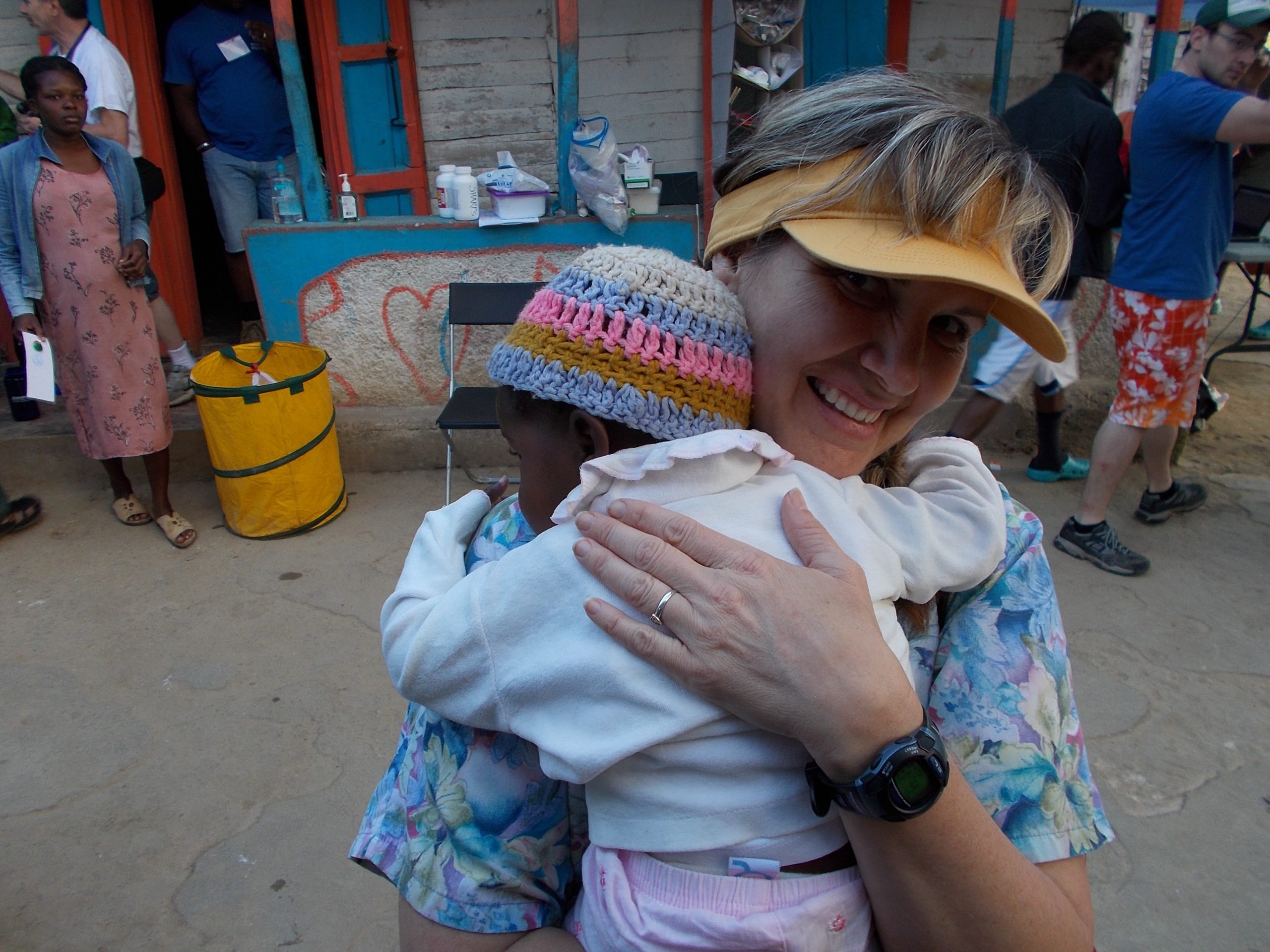Some information may be outdated.
Imagine walking 30 miles to stand in line for hours to see a physician. Five years after a massive earthquake struck Haiti, residents of a remote Haitian village are still traveling long distances in search of medical care.
On April 8, four Moab residents will join a team of Haiti Health Initiative volunteers when they journey to rural Haiti, where they will spend a week providing much-needed medical care. After traveling four hours by bus up a steep, winding, partially paved road, the volunteers will hike another three miles to a remote village while carrying 40- to 50-pound backpacks.
Along with their personal gear, including tents and sleeping bags, surgical nurse Tammy Tucker, labor and delivery nurse Roseanne Lewis, and medical technologist Debra Paxman will carry stethoscopes, batteries, gloves, and other equipment and supplies. Moab contractor and excavator Dave Cozzens will also travel to Haiti to lend a hand installing clean water systems.
The volunteers will set up makeshift clinics in the village of Timo, where most of the buildings were destroyed after a January 2010 earthquake killed 200,000 people, injured another 300,000 and left a million homeless.
When they arrive, there will be people who have stood in line since the wee hours of the morning after walking many miles through jungle terrain, Tucker said. Doctors check patients’ vital signs while they both sit outside on chairs placed in the shade of a tree, she said.
“We see 300 people a day,” said Tucker, who will be making her sixth trip to the Caribbean island nation.
During past trips, Tucker cared for people with various wounds and infections, as well as those with post-traumatic stress symptoms, such as headaches, stomach aches and gastrointestinal problems. She’s tended to babies and mothers who have lost their milk due to stress and malnutrition. She’s cleaned out maggots from the gaping wound of a man injured during the earthquake. He was susceptible because he had no access to bandages or clean water, she said.
“He came every day for 10 days,” Tucker said. “I cleaned the wound and re-dressed it.”
“We have community workers that we train,” she added. “I taught her how to care for his leg. Every six months, we would assess it. It took two years for the leg to heal. We gave him crutches and shoes. He had been barefoot and had been using an old board or stick to walk.”
In addition to medical workers, Haiti Health Initiative teams include water engineers who build and repair pipes, faucets and springs to provide clean drinking water. Dental care and agricultural assistance are services donated, as well.
It will be Lewis’ second trip to Haiti. During her previous visit, her main responsibility was teaching traditional birthing attendants such skills as neo-resuscitation, prenatal care and advanced intervention techniques.
For the 2013 trip, Lewis raised money to buy a birth simulator, or “manikin,” which she used to demonstrate how to safely handle abnormal situations such as a breech birth or a prolapsed cord. Though each volunteer works with a translator, the birth simulator made communication much easier, Lewis said. Haitians speak a French-based Creole called Haitian Creole.
Volunteers teach villagers how to treat various ailments such as anemia, as well as intestinal parasites – a problem dealt with by giving children shoes that are purchased in Haiti, Tucker said.
It will be the first trip for Paxman and Cozzens. Paxman said she expects to do data entry, and help measure people’s blood pressures. Cozzens said he plans to work on water systems, possibly laying water pipes or installing faucets.
Orem resident Mark Marshall grew up in the village of Timo and founded Haiti Health Initiative. Disaster teams from the United States travel to Haiti in April and October.
Volunteers pay their own airfare and other expenses, often finding sponsorships to fund their journeys.
While volunteers sometimes purchase medicines and equipment, supplies are occasionally donated. For the upcoming April trip, Moab Regional Hospital is providing medical supplies; Moab Half Marathon’s Winter Sun 10K donated drawstring bags; and Wendy Young and her family donated headlamps and beads. Lewis said she will be showing women and girls how to make “cycle necklaces and bracelets” to track their menstrual cycles.
WabiSabi also donated a used sewing machine that Lewis said she will leave with a community health worker so that girls can make personal hygiene supplies – for there are no stores, she said. Mothers are given newborn kits containing blankets, cloth diapers, bulb syringes and baby brushes, courtesy of the Moab LDS Church’s Second Ward. Used laptop computers or projectors are also needed for teaching purposes, Lewis said.
Marshall is a native of Haiti who converted to the Mormon faith and eventually settled in Utah. The organization itself is not LDS-based, however. Volunteers come from all faiths and denominations, Tucker said.
Providing access to higher education is also a goal of Haiti Health Initiative. Currently, the organization is paying tuition for an agriculture student at the University of Virginia, and for a dental student in Port-au-Prince, Haiti’s capital.
“Knowledge is power,” Tucker said. “That’s what’s going to change poverty.”
Among her personal gear, Tucker always packs extra snacks like dried fruit, jerky and Clif Bars – partly to add to her daily diet of beans, rice and chicken, but also to give out to children who are obviously hungry. Haiti is the poorest country in the Western Hemisphere, and “most Haitians on average eat one meal a day,” Tucker said.
Moab volunteers join medical relief efforts, five years after deadly quake
The best way for people to help Haiti Health Initiative is to visit the web site haitihealthinitiative.org, which offers information about how to donate money.
Appreciate the coverage? Help keep local news alive.
Chip in to support the Moab Sun News.





